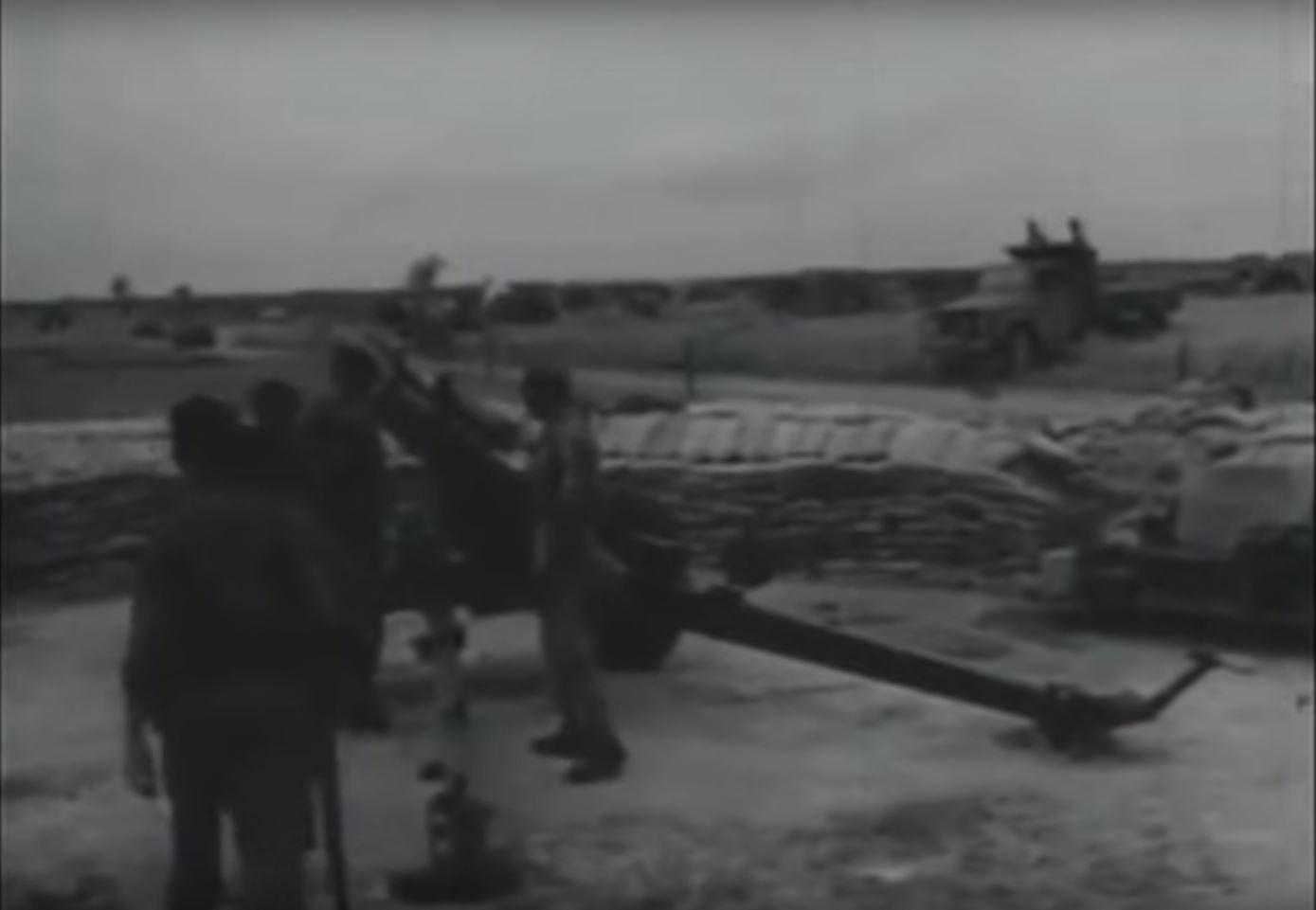Viet Cong survivors from the Battle have said that they knew that the rounds from the Australian artillery came in one after the other - 1, 2, 3, 4, 5, 6 down the line and that they could time the rounds and creep forward. However they were terrified of the the New Zealand artillery rounds as they all came in simultaneously as a single salvo and that they often had entire lines of troops wiped out. In the end the Viet Cong refused trying to attack through the New Zealand wall of flame.Patrols continued the following day, 18 August. D Company left the base at 11.15 that morning bound for the Long Tan rubber plantation. As they departed Nui Dat the sounds of a concert by Little Pattie, the Australian entertainer, reached their ears. They entered the Long Tan plantation at 3.15 that afternoon. Less than an hour later the Viet Cong attacked in force, putting the Australians under mortar, machine gun and small arms fire. Only the quick response of a New Zealand artillery battery to desperate calls for support saved D Company from annihilation.Battle of Long Tan | The Anzac Portal
anzacportal.dva.gov.au
On July 16 1965 161 Battery, stationed at Bien Hoa air base near Saigon, opened fire on a Viet Cong position in support of 1RAR, Australian Army who were both attached to the American 173rd Airborne Brigade.
161 Bty Royal New Zealand Artillery Vietnam 1965 - The Battle of Long Tan
On July 16 1965 161 Battery, stationed at Bien Hoa air base near Saigon, opened fire on a Viet Cong position in support of 1RAR, Australian Army who were both attached to the American 173rd Airborne Brigade. Just over one year later on 18 August 1966, 161 Bty, 16 Field Regiment, RNZA part of the …battleoflongtan.com
Just over one year later on 18 August 1966, 161 Bty, 16 Field Regiment, RNZA part of the 1st Australian Task Force at Nui Dat, South Vietnam would be firing in support of D Company, 6RAR in The Battle of Long Tan alongside Australian artillery – 103 Bty & 105 Bty Royal Australian Army and 2/35th Howitzer Battalion, US Army. The Forward (Artillery) Observers attached to D Coy, 6RAR were Capt Morrie Stanley, Bdr Willie Walker and Bdr Murray Broomhall all from 161 Bty, RNZA. They controlled the 24 guns in support of themselves and the rest of D Coy for more than 3.5 hours in the rubber plantation called Long Tan, firing 6-8 rounds per minute (2 above the intense rate) almost non-stop.
105 Australians and 3 New Zealanders (D Coy, 6RAR) fought and defeated 2,500 North Vietnamese and Viet Cong soldiers. 18 Australians and more than 500+ VC and NVA were killed.
Between June 1964 and December 1972 more than 3000 New Zealand military personnel served in South Vietnam. At its peak in 1968 the New Zealand force numbered 543. Thirty-seven men died while on active service and 187 were wounded. This was the first war that New Zealand did not fight alongside Great Britain who did not participate in the Vietnam conflict, instead they supported the forces of the USA and Australia in Vietnam.
and in much geater detail

How a group of Kiwi gunners prevented a massacre of Anzac soldiers in Vietnam
Heroic stories from the war in Vietnam are little remembered, but a group of gunners saved the massacre of Anzac troops during the Battle of Long Tan.www.noted.co.nz
Navigation
Install the app
How to install the app on iOS
Follow along with the video below to see how to install our site as a web app on your home screen.
Note: This feature may not be available in some browsers.
More options
-


LIVE: Richmond v Melbourne - 7:25PM Wed
Squiggle tips Demons at 77% chance -- What's your tip? -- Team line-ups »
You are using an out of date browser. It may not display this or other websites correctly.
You should upgrade or use an alternative browser.
You should upgrade or use an alternative browser.
Rumour Travis Fimmel - Actor/ former St. Kilda player...?
- Thread starter Crunchbone
- Start date
- Tagged users None
Similar threads
- Replies
- 911
- Views
- 22K
- Locked
- Replies
- 902
- Views
- 18K
- Locked
- Replies
- 281
- Views
- 12K
- Replies
- 10
- Views
- 680
- Replies
- 555
- Views
- 16K



